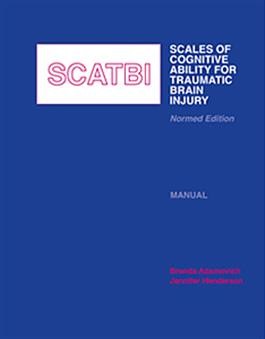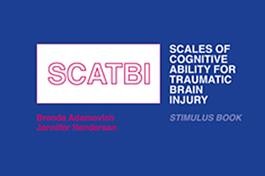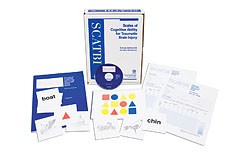Scales of Cognitive Ability for Traumatic Brain Injury (SCATBI)
Complete Kit
- Ages Adolescent and Adult
- Testing Time 30-120 minutes
- Administration Individual
-
Product Code 9060 ( MR #020931 )
* Qualifications required to purchase this item. Click here to complete the qualifications form.
Price $414.00
Contents
-

Scales of Cognitive Ability for Traumatic Brain Injury (SCATBI)
SCATBI Examiner's Manual
(includes online access code to Stimulus content)
$108.00 -

Scales of Cognitive Ability for Traumatic Brain Injury (SCATBI)
SCATBI Simulus Book
Normed Edition
$108.00 -

Scales of Cognitive Ability for Traumatic Brain Injury (SCATBI)
SCATBI Record Forms (25)
Normed Edition
$86.00 -

Scales of Cognitive Ability for Traumatic Brain Injury (SCATBI)
SCATBI Stimulus Card Set
Normed Edition
$104.40
-

Scales of Cognitive Ability for Traumatic Brain Injury (SCATBI)
SCATBI Examiner's Manual
(includes online access code to Stimulus content)
$108.00 -

Scales of Cognitive Ability for Traumatic Brain Injury (SCATBI)
SCATBI Record Forms (25)
Normed Edition
$86.00 -

Scales of Cognitive Ability for Traumatic Brain Injury (SCATBI)
SCATBI Simulus Book
Normed Edition
$108.00 -

Scales of Cognitive Ability for Traumatic Brain Injury (SCATBI)
SCATBI Stimulus Card Set
Normed Edition
$104.40
No additional information available for this item.

 Proud to be Canadian
Proud to be Canadian